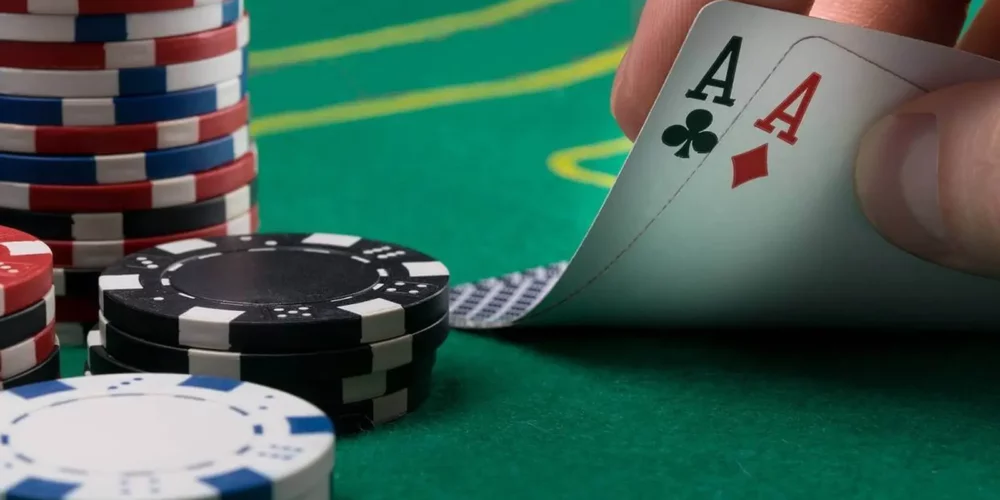If you’ve heard of the game baccarat, you know it pairs simplicity with excitement. Newcomers can quickly turn into savvy players thanks to its easy rules and inventive gameplay. In light of this, we’ll explore the essentials of baccarat, delve into strategic betting, analyze the banker bet’s significance, and highlight the critical nature of effective money management. How does one become proficient at this compelling online casino game?
Unveiling Baccarat Strategy: A Deep Dive into Rules, Winning Tips, and Wagering Systems
Last update: June, 2024

A Few Words About the Game
This thrilling online casino game captivates baccarat enthusiasts with its straightforward rules, lucrative potential payouts, and deep-rooted legacy. Thus, let’s walk through its historical backdrop alongside the essential rules list we’ve compiled. Here’s what you should know before stepping up to a baccarat table!
Quick History
We owe our enjoyment of baccarat today to Felix Falguierein, an Italian gaming enthusiast who crafted this game in the 15th century. Intriguingly, early baccarat was played not with standard cards, but with tarot decks of the medieval era. As it traveled to France, the game evolved into a variation known as Chemin de Fer, which we’ll talk more about soon.
Baccarat quickly made its way to different regions, gaining popularity across Europe throughout the 18th and 19th centuries. Many players are convinced that Tommy Renzoni brought the game from Cuba to Las Vegas, sparking a quest for rewarding tables among American players.
General Rules
To begin, it's worth noting that the name 'baccarat' stems from the Italian term ‘baccara,’ indicating ‘zero’, which aptly describes how face cards and tens carry zero points. Just like in blackjack, every point is vital as you aim to beat the dealer. It’s fitting to set forth the basic rules of gameplay, wouldn't you agree?
- Start by depositing and acquiring chips or tokens as needed, although in some cases, playing directly with real money is an option.
- Once your stakes are set, the dealing begins with six decks of cards stacked at 52 per deck.
- Both player and banker receive two cards each from the dealer.
- Victory is claimed by the hand closest to a value of 9, while the lesser hand concedes defeat.
Several considerations come into play when placing bets. To kick things off, decipher player win conditions by understanding card values in baccarat!
|
2-9 |
In baccarat, card numbers retain their face values. |
|
Face cards (J, Q, K) and tens |
Any of these cards is equal to 0 (zero). |
|
Aces |
The Aces bring 1 point for each. |
Consider a scenario: holding a '3' and a 'K' lands you a hand worth '3'. If the banker possesses a '2' and a '6', their total is '8', surpassing your '3'. Thus, the banker wins this round while you face a loss.
Here’s another example: you have a '3' and a '4', matching the banker’s '2' and a '5'. Both total '7', resulting in a tie.
Keep in mind: Should your hand exceed a value of 9, subtracting 10 is necessary, or simply drop the tens digit. For instance, a '9' and a '5' make '14'. After deducting 10, you’re left with '4'. This system is gentler than blackjack’s loss upon exceeding 21, right?
Intricacies around the third card complicate matters further. Let’s delve into those specifics next!
- Typically, players hold when encompassing 6-7 points. With less than 5, drawing a card becomes essential, while a score of 5 hands the option of holding or drawing a third card.
- The banker halts when at 6 or more points. Should the dealer’s hand call for a third card in instances such as holding 3 points against a player’s card of 9, similar rules apply when holding 5 points against a player’s third card of 4.
Payouts in Baccarat
Devising effective gambling strategies necessitates understanding payout calculations for online gameplay. With altering rules across games, we stress gaining insights into possible bets and available bankroll. Doing so enhances your table advantage, safeguarding your deposit while reclaiming significant returns. So, what betting choices are available in blackjack, and what are their house edges?
|
Player bet |
A player bet triumphs when the player’s hand edges closest to 9, offering payouts of 1:1. Thus, a $30 stake nets $60. |
|
Banker bets |
Conversely, the banker bet wins with the highest hand by the croupier, awarded in evens after subtracting a 5% commission. A $40 stake thus returns $78, post a $2 fee. |
|
Tie bet |
Under a tie, both hands yield an equal outcome, with the tie bet yielding a handsome 8:1 payout. A $30 stake could thus escalate to $240. |
In a stalemate scenario, player and banker bets are 'pushed'. This leaves your stake neither won nor lost, allowing you options of modifying, withdrawing, or amplifying your chip count.
Different Versions of Baccarat
Thus, mastering baccarat isn’t a monumental task. Developing a strategy that triumphs requires familiarity with the game’s numerous variations available at online casinos. Due to this, house edge percentages and odds might exhibit divergence. So, what versions of baccarat cards might you encounter?
- Punto Banco.
What we've described is the standard iteration. Its standout feature? The house takes on the role of banker, levying a 5% commission on banker wagers. - Chemin de Fer.
Translating from French, 'Chemin de Fer' stands for 'railway'. Here, players might assume the banker role, further influencing calls for the third card, be it by players or bankers. - Mini-Baccarat.
Both on- and offline popularity surrounds these games featuring fast-paced, lower-stake tables, aligning to Punto Banco’s dynamics.
Your deposit value, wagers, and potential winnings shift according to the game variations involved.
Betting on the Banker: An Essential Tactic for iGaming Freshmen
iGaming at virtual establishments hinges on luck and precision. Thus, a well-crafted baccarat strategy is indispensable. Successful tactics spell victory; flawed ones might deplete your bankroll. As such, we endorse an essential approach towards mitigating house edge: assess banker bets carefully.
Our banker betting method, as previously detailed, reveals its profitability. The banker bet bears a minimal house edge of 1.06%, translating to an RTP of 98.94%. Your superior advantage emerges clearly.
To slot the strategy within context, ponder other betting types’ odds. Player bets carry an appreciable 98.76% RTP, while tie bets reside lower at only 85.64%.
Should you seek further mathematical clarity, calculus reveals favorable odds for players.
|
Hand |
Loses |
Wins |
Ties |
|
Player hand |
45,87% |
44,63% |
9,51% |
|
Bank hand |
44,65% |
45,87% |
9,51% |
Eliminating ties gives a clearer picture: players win about 49.32% of the time compared to bankers’ 50.68%. Considering a 5% commission, the banker’s odds remain stronger, reducing theoretical losses from 1.36% to 1.17% on a $100 bet.
Unquestionably esteemed, the banker bet doesn’t singlehandedly ensure victory. Player bets host favorable odds, too, with assorted strategies potentially amplifying success further.
The Baccarat Strategy to Avoid
The varietal nature of baccarat strategies may lead to gains or losses; the banker wager showcases excellent results. Conversely, ties align with a hefty house edge — it stands wise to steer clear. Sound bankroll management stands vital on baccarat tables, turning certain wagers inadvisable. Let us explain our reasoning.
Though enticing at face value, tie betting remains fraught. Despite the alluring 8:1 payout akin to a promising bonus without wagering demands, prudence dictates a stringent approach: baccarat participants typically find themselves advised to abstain.
It’s quite straightforward why this betting strategy has minimal chances to pay off, as the odds of winning are exceptionally slim, making the risk of a significant loss massive. Suppose you risk $100; there's a theoretical chance of losing 14.36% of it. It’s rare to stumble upon games where such a risk is acceptable, and it hardly feels like a bonus you’d want. We suggest considering it only when it’s woven into an intricate betting strategy.
Betting Systems to Play Baccarat
To ensure your casino sessions, especially at baccarat, are more profitable, we've crafted a list of systems that can supercharge your winnings, acting like a well-earned bonus while shielding you from constant downfalls. Yes, there might be brief pauses in consistent wins, but a reduced house edge already puts you on the right track. Dive into this baccarat strategy collection to transform your casino experiences into successful streaks!
The Martingale System
One of the go-to strategies in online casino circles is undeniably popular for a reason. It’s incredibly simple: just double your wager after a loss. And after you finally hit that win, you dial back your bet.
Allow me to illustrate the Martingale method: You start with a banker bet of $10 and unfortunately lose. So, you make another banker bet, this time it's $20. Another loss would mean betting $40 next. But if that $40 wager wins? You walk away with $80.
Does it actually bring in profit? Let's crunch the numbers: snagging an $80 win after your cumulative $70 investment ($10 + $20 + $40) isn't too shabby, leaving you with a $10 profit. The key is hitting the largest bet of the sequence and knowing when to step away.
Imagine another baccarat strategy where you double your bet after each losing wager, but with a twist. Imagine an approach inspired by an Italian mathematician, where you calculate your next bet by summing the latest two numbers in a series, like 1, 2, 3, 5, 8, 13. Winning requires you to backtrack, but remember, the pitfall here is potentially running out of funds or maxing the table’s betting limits too soon.
The Fibonacci Strategy
Alternatively known as the Reverse Martingale, this strategy turns everything around: you only ramp up your baccarat bet with a win while dialing it back during losses. Its core is to maximize your investment's returns. After a trio of wins, it's time to pocket the earnings.
The Paroli System
While perhaps more intricate, this baccarat management system again revolves around bet adjustments. Delve into it and you’ll find it's a blend of increasing and decreasing stakes.
The Labouchere System
Start by identifying a numeric sequence like 1, 2, 3, 4. Add the first and last numbers for a combined stake – here, 1 plus 4 equals $5, becoming your initial bet.
- A victory means striking off the numbers used, leaving you with 2 and 3.
- Any bets that don't pan out get added to the sequence. Picture it like having 1, 2, 3, 4, 5.
- Continue with this technique until you're left with a solitary number.
- In essence, this betting system mirrors the Martingale technique, but it's thriftier, limiting sudden expenditure. Just tweak your bet by a single increment on each win or loss. Given baccarat tables’ typical constraints, this tactic lets you extend your playtime.
- Baccarat is a captivating game that's user-friendly too. If you're after extra rewards, deploy these insights to quickly bolster your bankroll!
The D’Alembert System
Set Your Win/Loss Boundaries: Always Play within Means
The D’Alembert System
Set Your Win/Loss Boundaries: Always Play within Means
More Baccarat Strategy Tips
Baccarat, like every casino thrill, entails its share of uncertainty. Thus, manage your play responsibly and only stake what you can endure losing; winnings shouldn't be entirely recycled into more bets.
It's been noted that various baccarat bets come with different house advantages. For instance, tie bets are particularly harsh on gamblers, making awareness crucial, notably for newcomers.
All-in bets signify a total financial commitment in a single moment. In baccarat, it’s a risky move that could deplete your bankroll instantly, denying future play opportunities.
Pick Low House-Edge Bets
We consistently advocate for robust baccarat strategies that preserve your bankroll and offer value. Newbies should start with the banker bet, while seasoned players can choose any system from our recommendations to grow their assets.
Avoid All-In Bets
To truly savor baccarat, select a reputable casino boasting the right certifications, appealing bonus structures with fair terms, and a comprehensive array of baccarat tables, ensuring an enjoyable experience.
Select an Efficient Strategy
In conclusion, baccarat is a riveting table game presenting handsome gains to savvy players implementing strategic methods. We invite our audience to embrace effective tactics to secure higher wins at their chosen casinos. Maximize perks, slash house advantages, and grow your bankroll smartly!
Find a Good Online Casino
Baccarat offers an engaging online gaming experience, and we provide a treasure trove of information through frequently asked questions covering fundamental rules, suitable casinos, ways to leverage bonus deals, and strategies for amplifying your wins.
Final Thoughts
Generally, several baccarat variations for real stakes exist, such as Punto Banco, Chemin de Fer, and Mini Baccarat. While they share foundational elements, each has unique characteristics.
FAQ About Baccarat
Crucial advice from our experts is to select a fitting baccarat table. Choose your strategy wisely and consider the table’s stakes to find the perfect match for your bankroll and tastes.
What types of baccarat are available?
Engaging in the baccarat casino game should ideally occur at a credible online venue, especially where real money's involved. Hence, opt for a casino rich in bonuses, offering clear wagering terms, proper licensing, straightforward deposit options, etc. Feel free to explore our list of rigorously examined sites.
How to pick a baccarat table?
Effective money management is key for formidable wins, and we endorse a dependable baccarat strategy to our enthusiasts. The dealer bet stands out with superior odds, and it's wise to sidestep tie bets. Nonetheless, you have the flexibility to adopt any strategy or system from our selections.
Where to play the baccarat game?
Wondering about strategies to inflate your bankroll?
What baccarat strategy to use?
For starters, the banker bet is recommended while avoiding tie bets is advised. Play at licensed, reputable casinos, carefully select tables, weigh the odds, and capitalize on bonus deals when they present themselves.
Introducing the new Wilde Card featuring Gerard's Gambit!
UKGC lays down fines on Kindred's Platinum Gaming and 32Red.





















